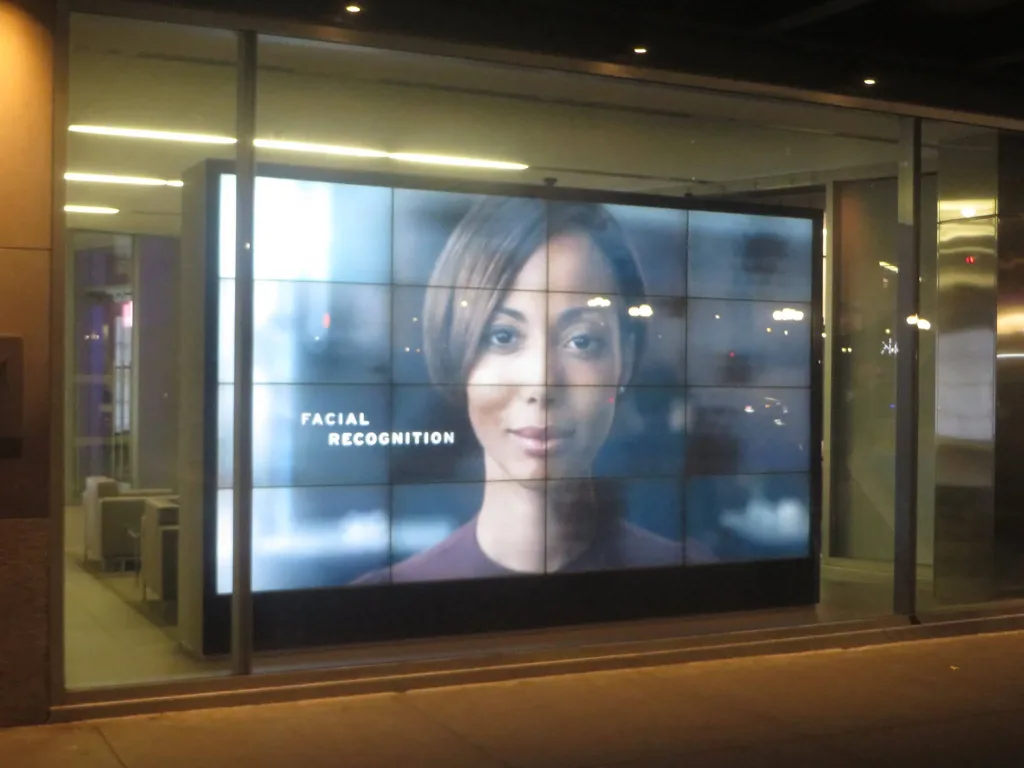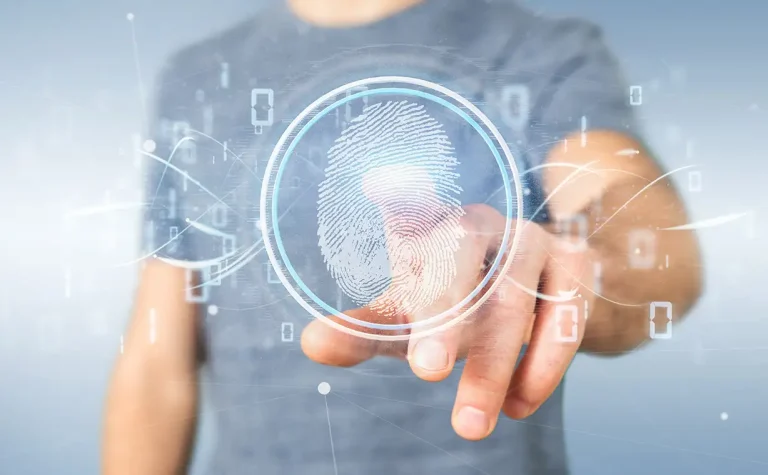New technologies continue to offer multiple advantages to both companies and their customers. This time we focus on biometric technology, which takes advantage of certain characteristics common to all people to provide greater security to large corporations and their customers.
What is biometric technology?
Biometrics is a method of recognizing people based on their physiological or behavioral characteristics, according to the International Organization for Standardization. It is a process similar to that usually performed by human beings recognizing and identifying their fellow human beings by their physical appearance, voice, gait, etc.
In the early 1970s, Shearson Hamil, a Wall Street firm, installed Identimat, a fingerprint-based automatic identification system that was used for physical access control to facilities; it was the first biometric solution for commercial use.
Currently, technology has made it possible to automate and perfect these biometric recognition processes; achieving a multitude of applications and purposes, especially those related to security.
What you must know?
Allbiometric characteristics must have a series of common elements to be considered as such, which are the following:
- Universality (all individuals have them).
- Singularity or univocity (they distinguish each individual).
- Permanence over time and in different environmental conditions.
- Quantitatively measurable.
On the other hand, the biometric technology that measures these characteristics must also have a series of conditions:
- Performance: level of accuracy.
- Acceptance: by the user.
- Resistance to fraud and usurpation.
The use of this technology is following a positive trend in recent years among large corporations thanks to the many advantages it offers, as we will see below.

1. A key that doesn’t need to be remembered
Nowadays, the most popular form of access and security for everyone is passwords. For passwords to be secure, they need to be long, combine alphanumeric elements and it is highly recommended not to use the same one all the time.
It is impossible to remember them all, so we resort to applications that act as safes for our passwords. However, biometric technology gets rid of all these inconveniences, it is not necessary to learn the fingerprint as if it were the ID card, you simply have to place it on the scanner and that’s it. The saving in effort and time is enormous for any company.
2. An easy to use method
The evolution of new technologies is constant and it is possible to be left behind and not know how to use certain tools (either because of time, lack of interest or for whatever reason). Biometrics does not require advanced knowledge or a long adaptation period.
Placing the eye in a retinal scanner, for example, does not require any prior training or in-depth knowledge, it simply needs to be done. This makes it much easier to implement in companies and improves their efficiency.
3. It is environmentally friendly
Unnecessary use of paper is a major issue in the world. An employee can use up to 10,000 sheets of paper per year. There are several paperless solutions at a business level that minimise the use of physical paper. Viafirma and its biometric signature contributes to saving paper and natural resources.
4. A system accessible to all
As the definition of biometric characteristics indicates, universality is one of the indispensable aspects, i.e. that all individuals have it, so no one is excluded with this type of technology.
The combination of these three advantages of biometric technology means that anyone can use it, without the need for prior training or the use of external devices, beyond the installation that the company itself has to do.
5. Saves working time
For those entrepreneurs whose business depends on good time management, biometric technology is very useful to reduce the loss of productivity due to punctuality problems.
6. Helps increase ROI
The implementation of biometric technology secures a significant return on investment. Unnecessary costs such as issuing ID cards, time savings, buddy punching and ghost employees are avoided. Improves accuracy and increases accountability, ensuring a higher return on investment.
7. Forgery-proof method
Biometric data, such as facial patterns, fingerprints or iris scans, among others, are almost impossible to duplicate with current technology. There is a one in 64 billion chance that your fingerprint is an exact match to someone else’s.
8. Increases the security of access control
One of the most widespread applications of biometric technology is access control, both physical (in buildings or restricted spaces) and logical (computer equipment, mobiles, tablets…). Currently in Spain, fingerprints are the most widely used method thanks to their high level of maturity, which allows us to offer competitive prices.
Sometimes, in sensitive areas of higher security, checks are carried out with a combination of techniques that can be both biometric (known as modal biometrics) or two different identification factors, such as a fingerprint together with a password or a card. This reinforcement makes it possible to know who or what he/she looks like and what he/she knows or has.
9. Enable secure access to the office
Fingerprint scanning for secure access to the office is now a possible reality for every company. Biometric door locks ensure that only authorised persons can access the office.
10. Allows for presence control
Traditional methods of controlling employees’ access to and departure from their workplaces are carried out with the use of a PIN or personal cards. One of the disadvantages of this type of technique is that it is easy to commit irregularities, simply by sharing the number or card with a colleague, this measure can be overridden.
Biometric technology helps to put an end to this type of practice with an additional verification that is much more difficult to circumvent. In these cases, the fingerprint is often used, although there is also a less widespread technique that uses the geometry of the user’s hand.
11. Combines with other technologies
On its own, biometric technology provides high levels of security, but combined with other technologies it can also offer further benefits. For example, NFC, which is often used for mobile payments, is coupled with biometrics to verify the user’s identity. In hospital environments, it is also used with NFC-enabled wristbands that indicate which medicines patients need to take.
Another possible combination is with smart cards, which store within their chip the biometric pattern that is then matched for successful authentication. This system is known asmatch on card.
12. It offers the possibility to carry out procedures remotely.
The benefits of biometric technology are not only focused on greater security, but also offer advantages that directly affect the daily life of users and employees, such as the possibility of carrying out procedures remotely.
These moments are often quite annoying, because they are slow, cumbersome and time-consuming. Thanks to biometrics, it is possible to verify who the user is without having to be present in a public office, which saves many unnecessary trips and, in the end, improves the efficiency of the administration.
13. Helps to achieve greater security
The biggest advantage a biometric system can have is greater security for your building. A staff member’s physical characteristics cannot be guessed, stolen or shared, which means a safer working environment for everyone. In addition, a biometric system is incredibly versatile, providing you with a flexible and scalable solution that can be used anywhere security screening is required.
14. Increases privacy
Biometric technology helps to increase the security of the transmission of personal customer data, as it encrypts it using a unique and personal key. Thanks to the great difficulty of falsifying biometric features, the privacy of customers and/or end users is guaranteed.
This competitive advantage can make the difference between a user working with a company that uses biometrics and one that does not, because privacy is increasingly valued in society.
15. Improve corporate image
The application of new technologies, biometric or otherwise, has many advantages for any company, such as increasing efficiency, security and reducing the likelihood of internal fraud. In addition, these entities are often associated with innovation and investment in research and development, improving the company’s image and public perception of the company.
Our biometric e-signature solution for your contracts
The use of biometric technology is not something of the future, but it is used nowadays and it is in a growing trend thanks to the great amount of benefits it offers. There are already solutions such as Viafirma Documents that introduce biometric technology into their applications, allowing online agreements to be concluded 100% legally and securely.



